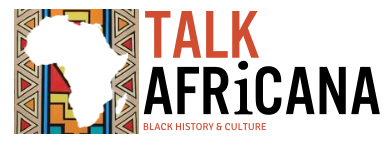During the Herero and Namaqua genocide of 1904–1908, the infamous Shark Island Concentration Camp served as a grim tool of the German Empire. From March 1905 until its closure in April 1907, this desolate camp bore witness to the tragic demise of between 1,032 and 3,000 Herero and Namaqua men, women, and children. Their lives were cut short in the most heart-wrenching circumstances, leaving behind a haunting legacy of suffering and sorrow.

Shark Island, infamously known as “Death Island,” served as one of the five concentration camps established by the German Empire in German South West Africa. Situated off Lüderitz in the present-day Namibia, the island gained notoriety during the Herero and Namaqua genocide of 1904–1908, where it was utilized to confine surviving Herero and Nama individuals who had escaped the desert. Tragically, approximately 70% of the camp’s inhabitants succumbed to its horrors between its inception in 1905 and its closure in April 1907.
Background
The roots of the Herero revolt can be traced back to the 1890s, a period marked by increased pressure from German settlers who coveted the land, cattle, and forced labor of the ethnic groups residing in Namibia. Heightened by factors such as loss of property, mounting debts from resettling lost herds, meager wages, and racial inequalities, the tension between the Herero and the Germans escalated. In January 1904, the Herero and Nama people rebelled against German colonial rule, resulting in over 100 German settlers losing their lives near Okahandja.

Supreme Commander Lothar von Trotha arrived with a significant German force in June 1904 to suppress the uprisings. Under his orders, the Herero people were subjected to a brutal genocide characterized by starvation and dehydration, as German forces blocked their escape from the Namib desert. After their defeat, thousands of Hereros and Namas were imprisoned in concentration camps, where they faced disease, abuse, and exhaustion.

Shark Island Concentration Camp
The second phase of this genocide saw around 15,000 surviving Herero and Namaqua, mainly women and children with few men, being herded into concentration camps. Among these, Shark Island Concentration Camp stood out as one of the most appalling places of suffering. Prisoners were cramped into inadequate tents, providing little protection against the harsh environment, and endured daily beatings, human experimentation and sexual violence at the hands of their captors.

Deaths due to exposure, hunger, disease, and cold were frequent, with an average of eighteen prisoners succumbing daily. Shockingly, the German authorities continued to transfer more people from the interior to Shark Island, intending to exploit them as laborers in constructing a railway connecting Lüderitz with Aus.

The atrocities committed at the camp were beyond comprehension, with stories of cruel acts perpetuated by German officials. The prisoners, treated as slaves, were subjected to grueling labor, while women endured sexual violence, receiving meager rations of rice that led to malnutrition and exhaustion.

In a horrifying display of dehumanization, the camp physician, eugene fischer, conducted grotesque medical experiments on the captives, including on children born from rapes within the camp. Dr. Eugene Fischer’s infamous experiments sought to justify the belief that children of mixed-race unions were inferior. He and his team conducted a series of medical experiments on Herero and Namaqua imprisoned in shark island concentration camp, including the measurement of skulls, the removal of body parts for anatomical study, and the sterilization of women.

Prisoners were used for medical experiments and their illnesses or their recoveries from them were used for research.
The experiments were carried out under horrific conditions, with many of the subjects subjected to extreme pain and suffering. It’s alleged that Fischer himself wrote in his diary that the Herero and Namaqua were “excellent material” for research because they were “under our knife.”

Live prisoners were also subjected to experiments wherein they were injected with various substances including arsenic and opium, and the effects of these substances were studied via autopsy.

The captured women were forced to boil heads of their dead inmates and scrape remains of their skin and eyes with shards of glass, preparing them for examination by German universities.

An estimated 300 skulls were sent to Germany for experimentation, in part from concentration camp prisoners.

In 1907, after two years of unimaginable suffering, Shark Island Concentration Camp was finally closed down, leaving 70% of its inhabitants dead, with many others severely ill. Surviving Hereros and Namas were subsequently distributed as laborers among settlers in the German colony. Stripped of their rights, they were forced to wear metal discs with labor registration numbers and were barred from owning land or cattle.
With the outbreak of World War I in 1914, the South African Army took control of the colony, effectively ending Germany’s African empire. Namibia later became a South African mandate and finally gained independence in 1990.
Shark Island Concentration Camp serves as a dark reminder of the ruthless atrocities endured by Africa for centuries and has been cited as a “blueprint” for the horrors inflicted by the Nazis during the Holocaust.

